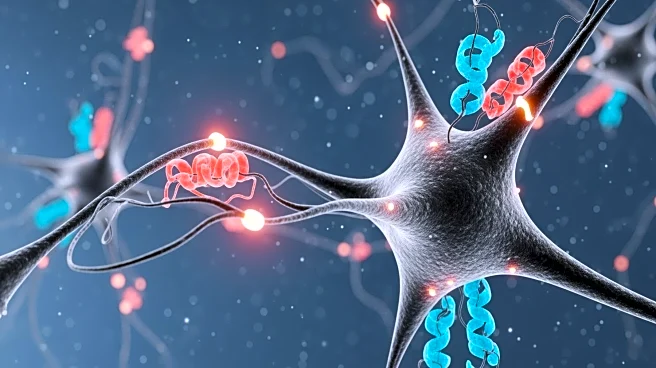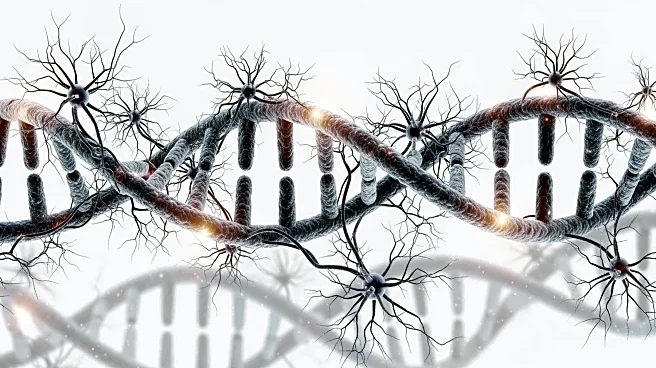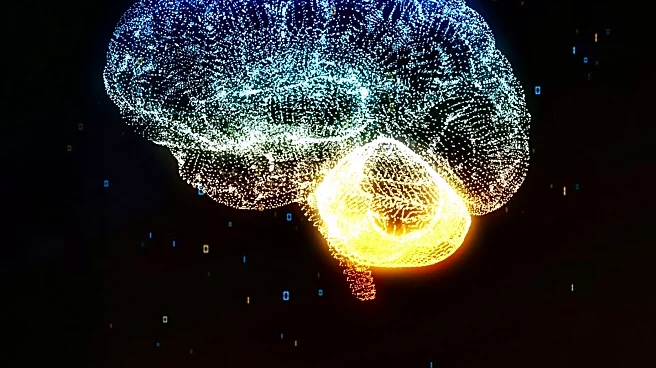What's Happening?
Recent research has identified hyper-maturity in the hippocampus of mouse models exhibiting anxiety-like behavior, providing insights into neuropsychiatric disorders. The study utilized transcriptomic
screening to identify datasets showing cellular maturation patterns in the hippocampus. The findings revealed that certain mouse models, including those treated with corticosterone and phosphodiesterase inhibitors, exhibit hyper-maturity, which is associated with increased anxiety-like behaviors. The research highlights the role of synaptic alterations in hyper-maturity, suggesting that synaptic organization is a key biological process involved. The study also explored the relationship between hippocampal maturation and anxiety, finding a significant correlation between hyper-maturity and increased anxiety-like behavior.
Why It's Important?
This research is significant as it provides a deeper understanding of the biological processes underlying neuropsychiatric disorders, particularly those involving anxiety. By identifying hyper-maturity in the hippocampus, the study offers potential pathways for therapeutic interventions targeting synaptic alterations. The findings could lead to improved treatments for anxiety disorders, benefiting patients and healthcare providers. Additionally, the study's insights into the relationship between hippocampal maturation and anxiety may inform future research and clinical practices, potentially leading to more effective management of neuropsychiatric conditions.
What's Next?
Future research may focus on exploring the mechanisms contributing to hippocampal hyper-maturity and its link to anxiety. Studies could investigate the effects of anxiolytic treatments on hippocampal maturation, potentially leading to new therapeutic approaches. Researchers may also examine the role of stress exposure and neural activity suppression in hyper-maturity, providing further insights into the condition. Additionally, the study's findings could prompt investigations into the transcriptomic hyper-maturity in human patients with neuropsychiatric disorders, potentially leading to advancements in personalized medicine.
Beyond the Headlines
The study's exploration of hyper-maturity in mouse models raises ethical considerations regarding the use of animal models in research. It also highlights the importance of understanding the genetic and environmental factors contributing to neuropsychiatric disorders. The findings may influence public policy and funding decisions related to mental health research, emphasizing the need for continued investment in understanding the biological basis of these conditions.












